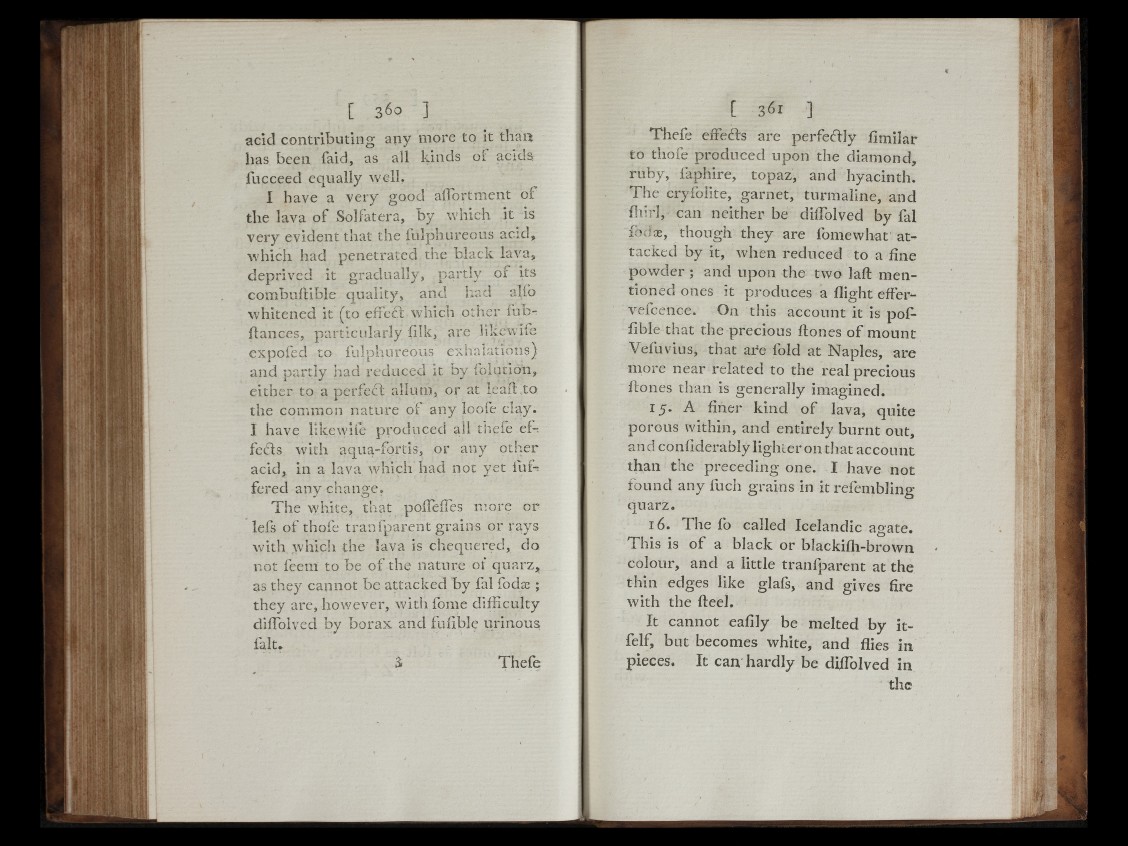
iTüjtSr ilM
360 ]
acid contributing any more to it than
has been faid, as all kinds ot acids
fucceed equally well.
1 have a very good aiTortment o f
the lava of Solfatera, by which it is
very evident that the fulphureous acid,
which had penetrated the black lava,
deprived it gradually, partly of its
combuitible quality, and had alio
whitened it (to effeil which other fubftances,
particularly iilk, are likewife
expofed to ililphureous exhalations)
and partly had reduced it by iolotion,
either to a perfecl allum, or at leail to
the common nature o f any loofe clay.
I have likewife produced all thefe ef-
feeds with aqiia-fortls, or any other
acid, in a lava which had not yet iuf-
fered any change. J o
The white, that poiTeiTes more or
lefs of thofe tranfpareiit grains or rays
with which the lava is cheqnereci, do
not feem to be of the nature oi quarz,
as they cannot be attacked by fal fodæ ;
they are, however, with fome difficulty
cliiTolved by borax and fuiible urinous
fait.
3 Thefe
[ 3ÓI ]
Thefe effeéls are perfeflly fimilar
to thofe produced upon the diamond,
ruby, faphire, topaz, and hyacinth.
The cryiblite, garnet, tormaline, and
fiiirl, can neither be diffolved by fal
ibdas, though they are Ibmewhat attacked
by it, when reduced to a fine
powder ; and upon the two laft mentioned
ones it produces a flight eftervefcence.
On this account it is p o f fible
that the precious ftones o f mount
Vefuvius, that are fold at Naples, are
more near related to the real precious
ftones than is generally imagined.
15. A finer kind o f lava, quite
porous within, and entirely burnt out,
and confiderably lighler on that account
than the preceding one. I have not
found any fuch grains in it refembling
quarz.
16. The fo called Icelandic agate.
This is o f a black or blackifli-brown
colour, and a little tranfparent at the
thin edges like glafs, and gives fire
with the fteel.
It cannot eafily be melted by itfelf,
but becomes white, and flies in
pieces. It can hardly be diflblved in
the
¡P